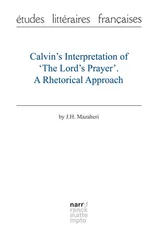Helge Fauskanger - J.R.R. Tolkien’s Lord’s prayer and Hail Mary in Quenya - Syntactical and Etymological Analysis
Здесь есть возможность читать онлайн «Helge Fauskanger - J.R.R. Tolkien’s Lord’s prayer and Hail Mary in Quenya - Syntactical and Etymological Analysis» весь текст электронной книги совершенно бесплатно (целиком полную версию без сокращений). В некоторых случаях можно слушать аудио, скачать через торрент в формате fb2 и присутствует краткое содержание. Жанр: Языкознание, на английском языке. Описание произведения, (предисловие) а так же отзывы посетителей доступны на портале библиотеки ЛибКат.
- Название:J.R.R. Tolkien’s Lord’s prayer and Hail Mary in Quenya: Syntactical and Etymological Analysis
- Автор:
- Жанр:
- Год:неизвестен
- ISBN:нет данных
- Рейтинг книги:5 / 5. Голосов: 1
-
Избранное:Добавить в избранное
- Отзывы:
-
Ваша оценка:
- 100
- 1
- 2
- 3
- 4
- 5
J.R.R. Tolkien’s Lord’s prayer and Hail Mary in Quenya: Syntactical and Etymological Analysis: краткое содержание, описание и аннотация
Предлагаем к чтению аннотацию, описание, краткое содержание или предисловие (зависит от того, что написал сам автор книги «J.R.R. Tolkien’s Lord’s prayer and Hail Mary in Quenya: Syntactical and Etymological Analysis»). Если вы не нашли необходимую информацию о книге — напишите в комментариях, мы постараемся отыскать её.
J.R.R. Tolkien’s Lord’s prayer and Hail Mary in Quenya: Syntactical and Etymological Analysis — читать онлайн бесплатно полную книгу (весь текст) целиком
Ниже представлен текст книги, разбитый по страницам. Система сохранения места последней прочитанной страницы, позволяет с удобством читать онлайн бесплатно книгу «J.R.R. Tolkien’s Lord’s prayer and Hail Mary in Quenya: Syntactical and Etymological Analysis», без необходимости каждый раз заново искать на чём Вы остановились. Поставьте закладку, и сможете в любой момент перейти на страницу, на которой закончили чтение.
Интервал:
Закладка:
úsahtienna, noun in allative: into temptation . The allative ending - nnamay simply indicate "movement towards" (as stated by Christopher Tolkien in UT:432 s.v. Eldanna ), but if Tolkien based his Quenya translation of the Lord’s Prayer on the normal wording of this prayer, this ending here implies not only to , towards but into . The allative has the same force in the phrase mannar Valion into the hands of the Lords in Fíriel’s Song (LR:72; - nnabecomes - nnarin the plural). This allative ending is obviously related to the prepositional stem nâ 1- to , towards (LR:374). Tolkien stated that "prepositional" elements were normally suffixed to noun stems in Primitive Quendian (WJ:368, see the entry - ofor the quotation), so Quenya - nnawould presumably descend from nâ 1- in this suffixed position. (The Quenya ending, with double nn, would seem to be strengthened or nasal-infixed; the Telerin ablative still had simple - na, Tolkien equating Quenya lúmenna upon the hour with Telerin lúmena: WJ:367 vs. 407.) – Removing the ending we are left with # úsahtieas the noun temptation . The form most similar to this in the published corpus would be sahta marred , attested in the phrase Arda Sahta Arda Marred (MR:405, changed by Tolkien to Arda Hastaina, MR:408, 254). Yet it seems difficult, semantically, to get from "mar, marred" to "temptation". Nothing certain can be said about the etymology of # úsahtie, except that it evidently incorporates the negative prefix ú-, but some speculation may be offered: The Qenya Lexicon lists a verb saka- pursue , look for , search (QL:81). If a stem *sak- search was still valid at a much later stage of Tolkien’s conception, there could be a primitive causative verb * saktâ- make search (as for the sometimes causative verbal ending - tâ, see tulyaregarding primitive tultâ-). * Saktâ- would produce Quenya * sahta-. With the prefix ú-, used in the same "bad sense" as in úcarer sin , trespass above, we may interpret the verb * úsahta- as make (someone else) seek what is bad , which is a plausible etymology for a verb tempt . With the infinitival or gerundial ending - ie(as in en-yalië, UT:317), this verb could indeed produce an abstract # úsahtie temptation . It is, however, also possible to plausibly explain this word without resorting to the early "Qenya" material: Tolkien may have intended # úsahtieto be a derivative of the stem stag- press , compress (LR:388). This entry in the Etymologies lists no actual verb directly reflecting the meaning of the stem, but there could well be a primitive verb * stagtâ- (this would be yet another case of the ending - tâfunctioning as a mere verb-former, adding nothing to the meaning of the root – see ontaril). This * stagtâ- might later become * staktâ- > Quenya * þahta-, * sahta-. If this means to press , we might again have a gerund * sahtie, meaning pressing , pressure . By adding the prefix ú-, full of sinister connotations, we would arrive at # úsahtie, literally referring to some kind of "evil pressure". This may plausibly be a way of expressing temptation [31] These speculations turn out to be quite accurate, which is frankly more than I would have expected. VT43:22-23 reveals that one version of the prayer had, not úsahtienna , but the shorter form sahtienna . This was derived from a stem thag- oppress , crush , press which is plainly a mere variant of the stag- press , compress listed in Etym. For variation between aspirates like ph , th , kh and consonant clusters in s -, like sp -, st -, sk -, compare spal-, spalas- as variants of phal-, phalas- (LR:387). The final form úsahtie Tolkien referred to another stem saka-, which however did not mean "search" as it had in the early Qenya Lexicon; Tolkien defined it as "draw, pull" and indicated that sahta - is a verb induce , whence the prefixed gerund úsahtie = inducement to do wrong .
.
ya, relative pronoun which , that : lúmesse ya firuvamme* in the hour that we shall die . Nothing can be said of the etymology of ya; the Primitive Elvish form would probably be similar. This is our first attestation of yaas a separate word in a text that is indisputably Quenya. Previously we knew yaby itself only from the Arctic sentence published in The Father Christmas Letters : Mára mesta an ni véla tye ento, ya rato nea– translated "good-bye until I see you next, and I hope it will be soon", more literally probably *"…which I hope will be soon". While this comes from a work that has few connections to Tolkien’s Middle-earth mythos (indeed a work that does not belong to Tolkien’s serious literary production at all), it has long been recognized that the "Arctic" sentence represents some kind of Quenya or "Qenya". In LotR-style Quenya, yahas up till now only been attested with a case ending; Namárië has yassenfor wherein (or * in which , the ending for plural locative being suffixed to ya). Some, indeed, have assumed that ya- is simply the form the relative pronoun i(q.v.) assumes before an ending, and that yawould not appear as an independent form. This theory must now be abandoned; the manuscript before us clearly demonstrates that not only does yaappear independently but yaand icoexist as Quenya relative pronouns, both of them occurring here. This, of course, raises the question of when to use yaand when to use i. Are they interchangeable? I suspect that one would always use ya- when case endings are to be added; iis "indeclinable" in its capacity as article (LR:361 s.v. i-), and this may be true when it functions as a relative pronoun as well. But when iand yaoccur by themselves, it may seem that irefers to sentients (or perhaps more generally animates ), while yarefers to inanimates and situations (the Arctic sentence would be an example of the latter). In short, ivs. yamay represent a distinction roughly similar to English who vs. which , what . Another theory, still not disproved, may be that iis used when it is the subject of the following relative sentence (e.g. * Orco i tirë Elda an Orc that watches an Elf ), while yais the object (* Orco ya tirë Elda an Orc that an Elf watches ).
yáve, noun fruit . As indicated above, Tolkien’s manuscript may seem to read yavewith a short vowel, but since there just might be an accent merged into the letter above, we read yáveas in all other attestations of the word. These include the Silmarillion Appendix (where yávë fruit occurs as the very last entry) and the Etymologies : LR:399 s.v. yab- lists the same word with the same gloss, and the root itself is also glossed "fruit". The QL (p. 105) indicates that in Tolkien’s early "Qenya", this word appeared as yávainstead, and there was also a verb yav- bear fruit (listed in the form yavin, perhaps intended as the third person aorist; in later Quenya it would be first person instead). If such a verb was still valid in Tolkien’s later incarnations of Quenya, yávecould be seen as being basically or originally an abstract formation derived from this verb. Cf. a Quenya word like ráne straying, wandering , formed from the verbal stem ran- wander , stray (LR:383) by means of the same devices: lengthening the stem vowel and adding - e. Such abstracts may (later?) take on a more concrete meaning, denoting what is produced by the action rather than the action itself; hence the word núte, formed from the stem nut- tie , bind , does not mean tying , binding but rather bond , knot (LR:378). In a similar fashion, the meaning of yávemay have wandered from full abstract fruit-bearing to the concrete meaning fruit .
Читать дальшеИнтервал:
Закладка:
Похожие книги на «J.R.R. Tolkien’s Lord’s prayer and Hail Mary in Quenya: Syntactical and Etymological Analysis»
Представляем Вашему вниманию похожие книги на «J.R.R. Tolkien’s Lord’s prayer and Hail Mary in Quenya: Syntactical and Etymological Analysis» списком для выбора. Мы отобрали схожую по названию и смыслу литературу в надежде предоставить читателям больше вариантов отыскать новые, интересные, ещё непрочитанные произведения.
Обсуждение, отзывы о книге «J.R.R. Tolkien’s Lord’s prayer and Hail Mary in Quenya: Syntactical and Etymological Analysis» и просто собственные мнения читателей. Оставьте ваши комментарии, напишите, что Вы думаете о произведении, его смысле или главных героях. Укажите что конкретно понравилось, а что нет, и почему Вы так считаете.












